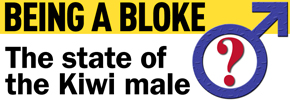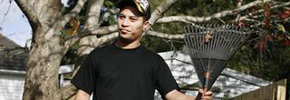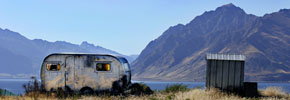Nicky Hager: NZ 'terrorism', the backstory
Sunday Star Times | Sunday, 11 November 2007Nicky Hager follows the route from September 11 to this country's terrorist responses.
The police "terrorism" case against Maori, peace and environmental activists has its origins long before Operation Eight began last year. Like the five-year case against Ahmed Zaoui, it is part of New Zealand's misguided response to the much wider disaster and folly of the United States' war on terror.
The story begins in January 2002, four months after the September 11 attacks, when cabinet approved new anti-terrorism legislation and "operational capabilities". The result was the Terrorism Suppression Act and, more important, a range of new anti-terrorism forces. The police created: a position of assistant commissioner for counter-terrorism; a 12-person anti-terrorism Strategic Intelligence Unit at police headquarters; a fulltime commando-style Special Tactics Group specialising in terrorism; and police liaison officers in Washington and London to channel anti-terrorism ideas and intelligence to New Zealand. An extra 35 "national security" police posts were added in 2004, the majority in "investigative and intelligence" units.
The Security Intelligence Service also got 20 new anti-terrorism staff at that time. Their task: increasing terrorism intelligence collection within New Zealand. They provided more field intelligence officers, especially in Auckland, an enlarged surveillance team and new analysts at headquarters. New interception and photographic equipment cost $1 million and, like the police, an SIS officer was posted to the Washington embassy to increase collaboration with the US intelligence and security agencies.
By late 2002 the new anti-terrorism bureaucracy was in place, closely tied into US and British thinking. An internal list of police terrorism-related personnel in October 2002 has 29 names. But already by then the US war on terror was going horribly wrong, with intelligence being invented to justify attacking Iraq, illegal seizure and torture of "terror" suspects and US intelligence and security agencies targeting numerous peaceful Americans. It started to go wrong in New Zealand too.
The first sign of trouble was in December 2002 when the SIS and police thought they had their first real terror suspect. Never mind the unlikelihood that a dangerous terrorist would arrive at Auckland airport and introduce himself to officials using his real name.
Ahmed Zaoui was transported to prison in a cavalcade of police vehicles with a helicopter overhead and thrown into solitary confinement. An embarrassing five-year story of incompetence and unwillingness to back down began.
A second worrying sign came soon after, with hints that the new anti-terrorism personnel were involved in policing protests. Official Information Act documents about peace protests against the March 2003 invasion of Iraq show that written briefings for the minister of police on US embassy protests were not written by the ordinary Wellington police, but by counter-terrorism assistant commissioner Jon White.
At the same time, policing of protest was becoming more aggressive, with heavier treatment of protesters than is normal in New Zealand. Hundreds of arrests occurred, most for actions that don't normally result in charges, such as writing with chalk on a footpath.
After an anti-war protest against John Howard in early 2003, a man was charged with never-before-used legislation for burning a flag. Another man was charged for a protest email to the American embassy with the words "napalming babies".
Hardly any of the hundreds arrested were eventually found guilty of offences, but there was an escalation of distrust and confrontation between police and protesters. The police operations manual instructs officers to protect demonstrators' freedom of speech and peaceful protest. But a pattern developed of heavy-handed policing and intrusive intelligence gathering. Indeed it appears that intelligence gathering was in part driving the police's actions. A police investigation into a small protest in late 2003 illustrates this graphically.
On October 2, 2003 World Farm Animal Day a group of young Aucklanders held a protest at the Tegel Foods offices about treatment of chickens. They scattered some hay on the floor of the reception area and 23-year-old school teacher Jesse Duffield delivered a protest letter. Police documents estimate the cost of cleaning up the hay was $111 plus GST.
However, early the next morning, detectives raided Duffield's home. He was arrested roughly and charged with home invasion (maximum 10 years' prison) and intentional damage (maximum seven years' prison). Police opposed him getting bail and later imposed a 9pm-6am curfew. Meanwhile his car was impounded for a week and his house searched by detectives. They seized his computer and mobile phone, plus 100 floppy disks, posters off the walls and a T-shirt saying "GE, you are what you eat." These possessions were not returned for nine months.
The only rational explanation for their actions was intelligence collecting. The police eventually dropped their absurd charges but they'd got hundreds of thousands of emails and texts to build a profile of the animal rights groups. The detective who led the raid, Mike Paki, was not a normal CIB officer, but a police intelligence officer from the Auckland Threat Assessment Unit who was surprise, surprise studying animal rights and other protest groups. It appears police were working their way through activist groups looking for security threats. It's not hard to see where such ideas would come from.
At the same time as Jesse Duffield's case, there were many such raids occurring in the US. One of them, in Philadelphia in 2004, was at the home of a member of the group Hugs for Puppies, which protests against animal-testing. The agents, who made no arrests but seized computers and mobile phones, were from a special FBI unit called the Joint Terrorism Task Force (JTTF). US animal rights and environmental groups have never killed anyone but are openly branded as terrorists by the authorities.
Since September 11 the JTTF has conducted raids against animal rights groups, environmentalists and other protest movements. In February 2002, the FBI's Domestic Terrorism Section Chief James Jarboe told the US congress that "special interest extremism" had emerged as a "serious terrorist threat".
Many so-called eco-terrorists have received long prison sentences on terrorism charges.
In 2005 the New York Times reported that newly disclosed FBI records showed that "counter-terrorism agents at the FBI had conducted numerous surveillance and intelligence-gathering operations that involved ... groups active in causes as diverse as the environment, animal cruelty and poverty relief".
New Zealand anti-terrorism staff attending US intelligence meetings and reading US publications were constantly exposed to this view of threats.
During these same years, New Zealand police intelligence and counter-terrorism staff dramatically increased their surveillance of protesters, and policing of protest and anti-terrorism seem to have become increasingly mixed. This provides the setting for the terrorism raids last month.
New anti-terrorism police intelligence units had identified and profiled radical suspects. The new anti-terrorism Special Tactics Group had collected covert video and photographic evidence in the mountains and the SIS in the cities. New anti-terrorism police staff planned the nationwide operations; and the new anti-terrorism boss Jon White oversaw it all. There has been a buzz around security circles in Wellington for the past year about them being on to something really big.
We can agree with the solicitor-general when he said that the police were right to investigate a group of political activists playing with guns in the mountains. But the police's commonsense quickly ran out as they turned it into a giant terrorism operation. The problem appears to be a mixture of poor judgement, preconceived ideas and organisational vested interest. Anti-terrorism staff arranged ill-fitting evidence, on people they'd already defined as threats, into the picture they were being paid to find.
It was inductive logic reinforced by group think, as NZ officials unthinkingly followed the American-style "security" model that's been so spectacularly bad at providing real security and peace elsewhere.
Sensible cops would have known radical talk is completely different to having real evidence of preparations for cold-blooded murder. In fact, the numerous police raids on and since October 15 appear to have been fishing trips by officers hoping to stumble over evidence of a plot that they had not managed to find in the previous year of intensive surveillance.
Sensible cops should understand the best defence against extremism and political violence is a tolerant, open society and freedom of political actions. Aggressive policing of ordinary healthy protest, heavy-handed intelligence targeting of ordinary people, stormtroopers smashing down doors, machine guns held to people's heads and military-style raids on rural communities are all unforgivably short-sighted.
• SPECIAL INVESTIGATION: Money for jobs immigration scam
• Bill and Ben on being blokes










